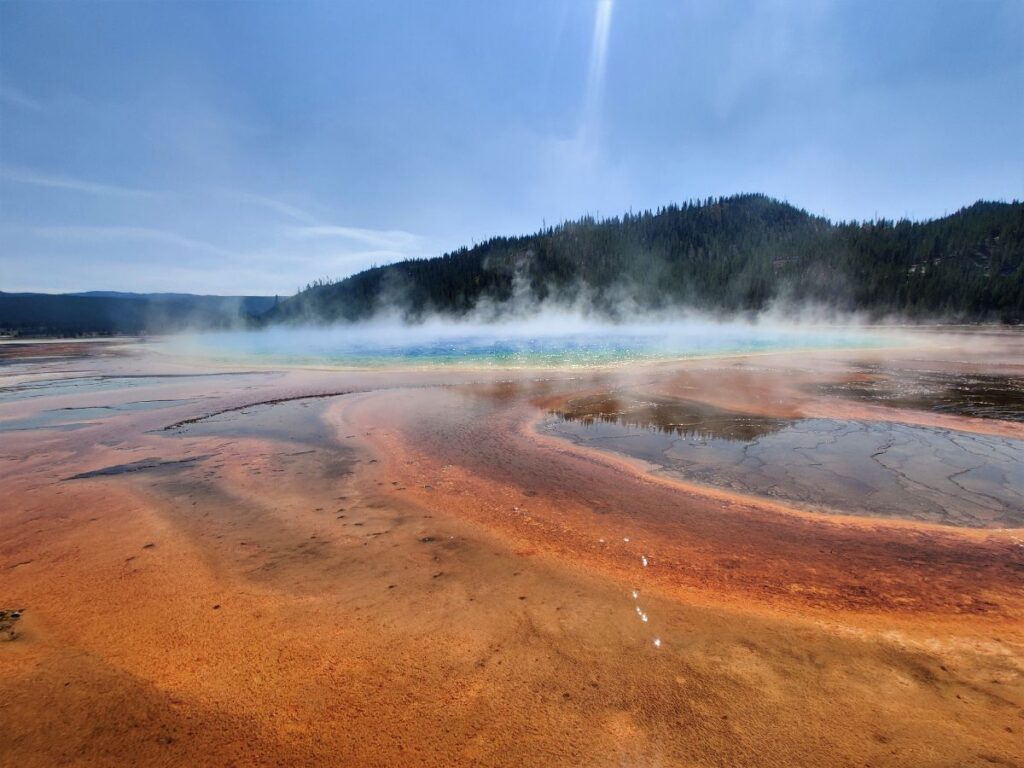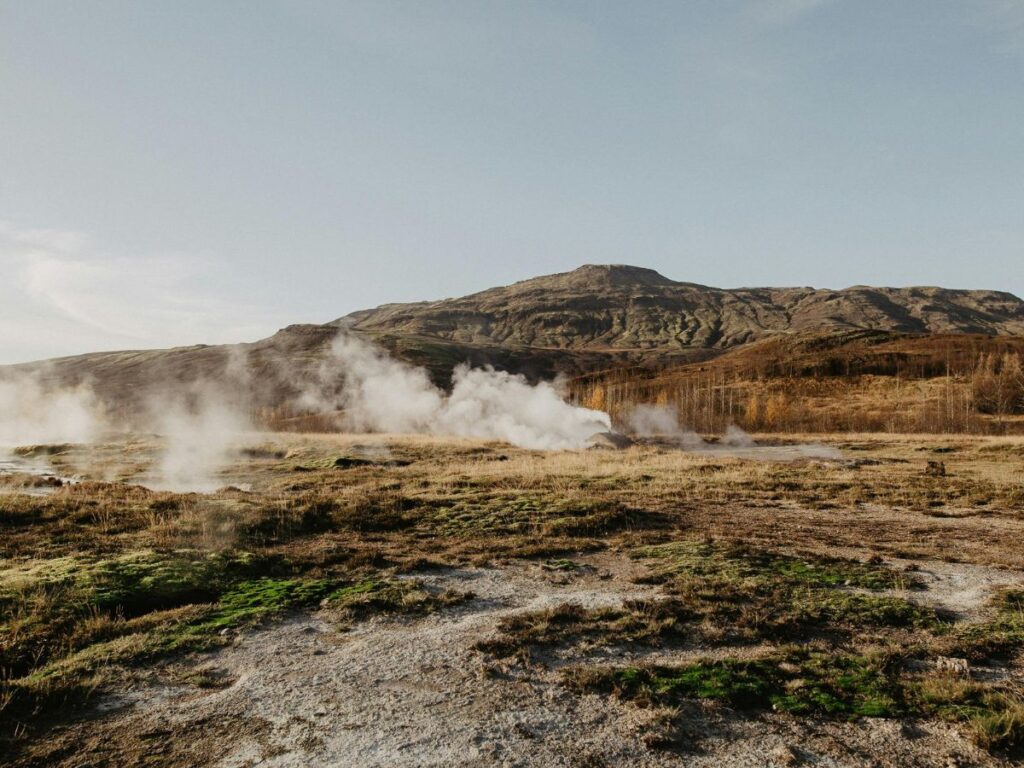Yosemite National Park, sprawled over nearly 1,200 square miles in California’s Sierra Nevada mountains, is a testament to nature’s grandeur. With its iconic granite cliffs, including the famous El Capitan, ancient giant sequoias, and the shimmering Bridalveil Fall, the park is a magnet for nature enthusiasts from around the globe. However, among the well-celebrated landmarks and trails, there lies a lesser-known treasure: the hot springs. These naturally occurring warm water sources, while not as iconic as the park’s waterfalls or rock formations, offer a unique experience that speaks to the diverse geology and natural wonders found within Yosemite’s boundaries.
The Geography and Science Behind Hot Springs
Hot springs have fascinated humans for generations, offering not only warmth but also a glimpse into the Earth’s geothermal processes. So, how do these springs form? At the most basic level, hot springs are the result of Earth’s crust allowing heat from the molten underground layers to come into contact with groundwater. As this water is heated, it rises to the surface, creating what we recognize as a hot spring.
Yosemite’s geographical placement makes it a suitable location for these phenomena. The Sierra Nevada range, where Yosemite is located, is a region of significant geothermal activity, with its deep granite bedrock, underground magma chambers, and a history of volcanic activity. Over millions of years, the movement of tectonic plates and volcanic activity has shaped the region, creating pockets where heat from below the Earth’s crust can escape, warming the groundwater and resulting in the formation of hot springs.
While Yosemite is more widely known for its towering cliffs and cascading waterfalls, its hot springs stand as a testament to the ever-evolving and intricate geological processes at work in this majestic national park.

Nearby Hot Springs
While Yosemite National Park offers a plethora of natural wonders, the region around it is also replete with geothermal marvels in the form of hot springs. If you’re venturing out of Yosemite and seeking a warm, mineral-rich soak, here are some nearby hot springs worth exploring:
Mono Hot Springs
Situated in the Sierra National Forest, Mono Hot Springs can be found roughly two hours from the northeastern part of Yosemite. This remote haven boasts multiple natural pools with varying temperatures, making it an ideal spot for both relaxation and therapeutic benefits. In addition to the hot springs, there are camping facilities, cabins for rent, and a resort restaurant, ensuring visitors have access to both raw nature and modern conveniences.
- How to Reach: From Yosemite, you would head south on CA-41, then onto CA-49 S, leading you through the Sierra National Forest. Follow signs to Mono Hot Springs.
- Recommended Means of Transportation: Given the rugged terrain and the possibility of encountering unpaved roads, a four-wheel-drive vehicle is suggested, especially if you’re planning to explore beyond the primary resort area.
Mammoth Hot Springs
Mammoth Hot Springs is located in Yellowstone National Park, not near Yosemite. However, there are several hot springs near the town of Mammoth Lakes. Nestled near the town of Mammoth Lakes, these hot springs are about a three-hour drive from Yosemite’s Tioga Pass entrance. The Mammoth area has a cluster of natural hot springs, each offering a unique experience. Wild Willy’s, Crab Cooker, and Hilltop are some of the popular ones. While these springs are more rustic without any built structures around them, their remote beauty and panoramic views of the Eastern Sierras make them a must-visit. It’s essential to follow all posted guidelines and respect the delicate ecosystem.
How to Reach: From Yosemite’s Tioga Pass entrance (which is seasonal), drive south on US-395 to reach the town of Mammoth Lakes. The various hot springs are scattered around, with most requiring a short hike or drive on dirt roads.
Recommended Means of Transportation: A standard vehicle can reach many of these springs, but some might require high-clearance or even four-wheel-drive, especially after rain or snow.
Grover Hot Springs
Located in the alpine setting of the town of Markleeville, Grover Hot Springs State Park is approximately a three to four-hour drive from Yosemite’s Big Oak Flat entrance. The park is known for its pool complex containing a hot pool and a cool pool. The naturally heated waters are believed to have therapeutic properties and are ideal for a relaxing soak after a day of hiking. There are also camping sites, picnic areas, and hiking trails within the park, allowing visitors to make the most of their trip. As always, while visiting natural sites, it’s paramount to practice “Leave No Trace” principles, ensuring these beautiful locations remain pristine for future generations.
How to Reach: From Yosemite, take CA-120 E and US-395 S to CA-89 S in Mono County. Follow CA-89 S directly to Markleeville where Grover Hot Springs State Park is located.
Recommended Means of Transportation: A standard car should suffice for this route, but always check road conditions in winter months.
Best Time to Visit
Hot springs offer a unique experience that can be enjoyed year-round, but the season and weather can add different dimensions to your visit:
- Fall: The changing foliage provides a colorful backdrop, and the cooler air makes the warm waters even more inviting.
- Winter: There’s something magical about soaking in a natural hot spring with snow all around. However, accessibility can be an issue for some springs due to snowfall.
- Spring: As snow melts, the landscape comes alive. It’s a refreshing time to enjoy the warm waters.
- Summer: While summer is warmer, the higher-altitude springs near Yosemite still provide a relaxing respite from hiking and other activities.

Weather Considerations
- Always check the weather forecast before heading out. Snow and rain can affect road conditions, making some springs inaccessible.
- If you’re visiting in winter, ensure your vehicle is equipped for snowy conditions and you’re prepared for potential road closures.
- Summers can be quite popular, especially on weekends. Consider visiting on weekdays to avoid the crowds.
- Make sure you’re prepared with the right clothing, footwear, and supplies, especially if you’re visiting more remote springs.
Health Benefits
The allure of hot springs extends beyond their scenic beauty, with many visitors drawn to the numerous health benefits they offer. Soaking in hot springs can increase blood flow and circulation, help with sleep, reduce stress, and promote overall relaxation. Hot springs naturally contain a variety of minerals including calcium, magnesium, silica, and sulfur. These minerals can help soothe skin conditions like eczema and psoriasis, alleviate joint pains, and aid in post-workout recovery. The warm water can relax muscle tension, potentially alleviating pain from conditions like arthritis or muscle strain. Minerals in the water can also exfoliate the skin, leaving it softer and refreshed. The tranquility of natural settings, combined with the therapeutic waters, provides an unrivaled mental escape. This can help reduce anxiety, clear the mind, and foster a deep connection with nature.
If you have heart conditions, high or low blood pressure, or are pregnant, consult with a physician before visiting. Ensure you don’t overheat and always stay hydrated.
Precautions and Park Rules
The majesty of hot springs demands respect, both for personal safety and the preservation of these natural treasures:
- Always adhere to guidelines set by local authorities or the park. These are established for your safety and the preservation of the environment.
- Non-slip footwear, hydration (drinking water), towels, biodegradable soap if you plan to bathe, and a waterproof bag for waste.
- Never use regular soaps or shampoos in the springs. Don’t leave trash behind. Avoid loud noises to respect other visitors and wildlife.
- Always test water temperatures before entering. Overly hot water can cause burns or lead to overheating. If feeling dizzy or light-headed, exit the water immediately.
- Use caution when entering or exiting hot springs. Wet rocks and algae can be particularly slippery.
- It’s critical to maintain the pristine condition of the springs. Never relieve yourself near or in the springs. Always use designated restroom facilities.
- These environments are also home to various wildlife. Maintain a safe distance, avoid feeding them, and respect their habitat.
Tips for a Great Experience
To fully immerse yourself in the experience and ensure a memorable trip:
- Arrive early to beat crowds and enjoy a tranquil experience.
- Consider bringing a waterproof camera or phone case to capture the beauty without risking damage to your electronics.
- If visiting with children, ensure they understand safety guidelines. Opt for springs with shallower areas or those with designated soaking areas for kids.
- Remember to pack snacks, extra water, and perhaps some games or activities for relaxation times outside the water.
By adhering to these guidelines and embracing the natural beauty around you, your hot springs visit can be both rejuvenating and unforgettable.

Key Takeaways
- Hot springs offer numerous health advantages, from improved blood circulation and stress relief to skin and muscle therapeutic benefits.
- Always adhere to guidelines set by park or local authorities, test water temperatures before entering, and be cautious of slippery surfaces.
- It’s crucial to respect the pristine nature of the springs. Use biodegradable products, avoid introducing contaminants, and pack out trash.
- While enjoying the springs, remember that you’re in a natural habitat. Keep a safe distance from animals and never feed or provoke them.
- Visiting during off-peak hours or weekdays can enhance the tranquility of the experience, and it’s always beneficial to come prepared with essentials.
- When with family, especially children, ensure safety protocols are understood and bring along essentials to keep them engaged and comfortable.
- Before indulging in hot spring baths, individuals with specific health conditions should consult a medical professional for safety.
FAQs
- Are the hot springs open year-round?
While the springs themselves don’t close, access might be limited in winter due to snow and road closures. - Is there an entry fee for the hot springs?
There’s no specific fee for the hot springs, but you might need to pay the general park entrance fee. - How hot is the water in these springs?
Temperatures vary, but most springs have water ranging from warm to very hot. Always test the water before entering. - Are pets allowed at the hot springs?
Pets are generally not allowed in backcountry areas of Yosemite, including many hot spring locations. - Can I drink the water from the hot springs?
No, it’s not advisable due to the mineral content and potential bacteria. - How deep are the hot springs?
Depths vary, with some being shallow pools and others being deeper basins. - Are the hot springs crowded?
Popular springs can be crowded, especially during peak season. Arriving early or visiting off-season can offer a more secluded experience. - Do the hot springs freeze in winter?
While the water remains warm, surrounding areas can be icy, making accessibility challenging. - How long is a typical visit to a Yosemite hot spring?
It varies, but many visitors spend 1-3 hours soaking and relaxing. - Is it eco-friendly to use soaps or shampoos in the hot springs?
Always use biodegradable, eco-friendly products to minimize environmental impact, and use them sparingly.
